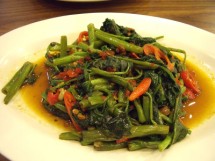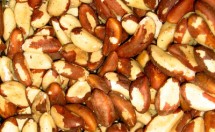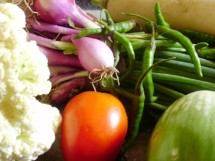
This may seem to be a contradiction to my earlier web page about cholesterol. I stated that cholesterol was not a causative factor in heart disease, and I still believe that is the case. However it is a factor, and achieving good cholesterol levels with diet, IS an inherently healthy thing to do.
The point is that certain foods, by virtue of their nutrient density, and fiber content, can lower serum cholesterol, and while also helping to lower blood sugar and inflammation, foods to lower cholesterol have a protective effect on your vascular system.
In plain English, cholesterol lowering foods kill three birds with one stone (sorry about the bird metaphor). Cholesterol numbers do correlate with decreases in cardiovascular disease, it’s just that those correlations are not as dramatic as often claimed.
Which Foods and Why?
Foods to lower cholesterol can be broken down into several categorizes:
Foods having high fiber
- Nuts and seeds of all kinds
- Whole oats, beans, legumes, lentils, peanuts
- Vegetables like greens, sprouts, squash, eggplant, green beans, and peppers
- Fruits like apples, pears, coconut, guava, grapefruit, berries, figs, apricots
Foods that provide beneficial fats
- Nuts, nut butters, seeds, seed butters
- Avacados, olives
- Free range grass fed meat, salmon and cold water fish
- Chicken, turkey
Foods that provide antioxidant protection
- Dark skinned vegetables, grapes and berries
- Onions, garlic, chilli pepers
- Nuts such as peanuts, hazelnuts, pecans, walnuts, sunflower and pumpkin seeds
- Spices like curcumin (curry), cloves, cinnamon, oregano, nutmeg, chilli powder
If you are beginning to see a pattern here, and it seems as though almost all foods have beneficial effects on cholesterol numbers, it’s because they all do one or a combination of the following things.
Cholesterol lowering foods lower blood sugar and insulin, bind with cholesterol in bile and remove it from the body, and protect the vascular system from inflammation and damage. The keys to foods to lower cholesterol are essential fatty acids, fiber, and antioxidants.
Some of these foods can also raise HDL, which as you remember is an antioxidant. The antioxidant properties of HDL are why a favorable hdl-ldl ratio is strongly correlated with good cholesterol levels and decreased risk of cardiovascular disease.
Remember that we are talking about foods in their natural unrefined state, with an absolute minimum of cooking and processing. These benefits are largely lost when foods are refined and processed.
What Are Good Cholesterol Levels?
American Heart Association Guidelines
| Desirable | Borderline Risk | High Risk | |
| Total Cholesterol | 200 or less | 200-239 | 240 and over |
| HDL Men | 60 or higher | 40 to 59 | 40 or less |
| HDL Women | 60 or higher | 50 to 59 | 50 or less |
| LDL | LDL less than 100 | 130-159 | 160-189 |
| Triglyceridesless | less than 150 | 150-199 | 200-499 |
The Point of All This is…….
The above cholesterol numbers are subject to the tendency of the pharmaceutical industry to promote the use of statin drugs to lower cholesterol levels. Many experts feel that inflammatory markers like c-reactive protein and homocysteine are better predictors of heart disease than good cholesterol levels.
However, keep in mind that foods to lower cholesterol have other positive health effects, and that in your efforts to achieve what are believed to be good cholesterol levels, you will be gaining other health benefits as well.
Remember as well that extremely low levels of cholesterol are not healthy. You need to strike a balance. Cholesterol lowering foods, combined with proper exercise and stress reduction will get your cholesterol numbers into a healthy range.
Click the link below to check out my brand new blog:
Okinawa Island and The Lifestyle of Longevity
Health Risks of Low Cholesterol






